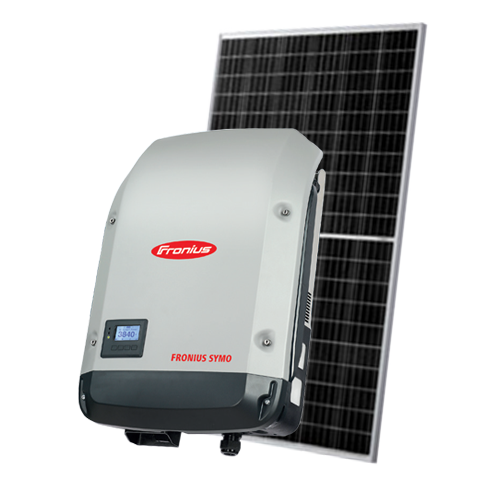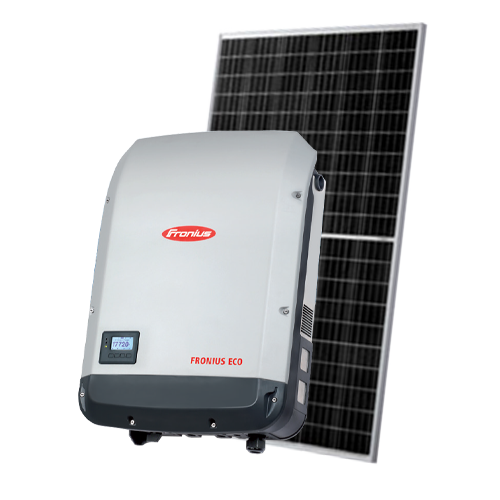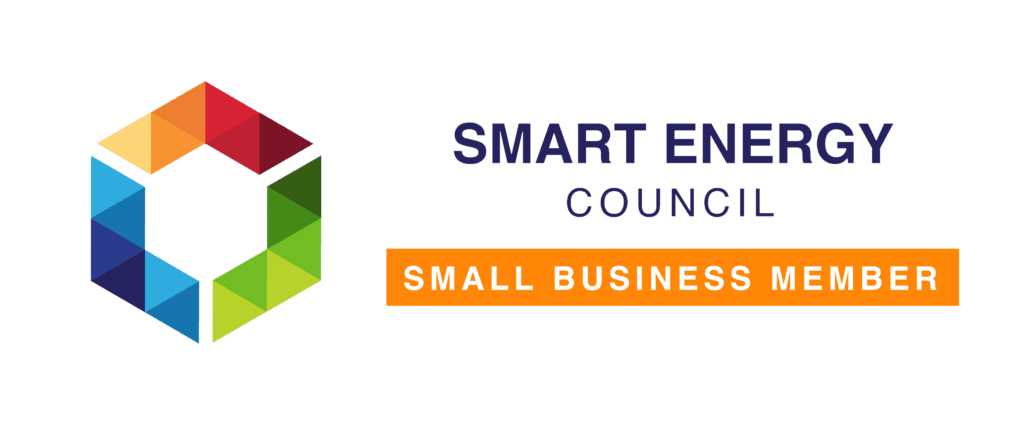The amount of space you have in your roof is an essential criterion in deciding the final solar system design for your commercial property. It all depends on the size of the system you need. One panel can be about 1.70 metres x 1.00 metre. Therefore, you get about 1.7 square metres for each panel installed on the roof. It also means you need at least the same dimensions for the roof of your building.
However, you cannot simply place the number of panels that the roof can accommodate. It is essential to consider the wattage output (W) of each panel, which can be anywhere from 250W to 360W for the best efficiency.
To serve as your guide, we recommend that you have four panels with 250W capacity or three 330W for every one-kilowatt system. Therefore, if you wish to have a 13.2 kW system, you will need to install 40 to 55 solar panels. These panels need about 68 to 93.5 square metres of roof space. In contrast, residential properties often require 15 to 20 solar panels, which can take up to 34 square metres of roof space.
If roofing dimensions seem to be an issue, our experts will find a workaround. Typically, if the solar panels have high efficiency, you can go for the lower required number of panels.
Under the Building Act 2011 and Building Regulations 2012, getting a building permit for the installation of solar panels is required. There are a few exemptions, however. Certain regional areas in Western Australia may not need to provide a permit for a Class 10 building with solar panels. These areas do not include metropolitan locations.
All Class 1 and Class 10a buildings are not required to have a permit when attaching photovoltaic panels, as well as solar hot water systems. The exemption applies to structures in the wind region C and D under the Australian Standard 1170.2. Conversely, Class 1 and Class 10a buildings in cyclonic areas, along with Class 2 to 9 in all wind regions, will all need a building permit.
If the system is 30kW or larger, the network should approve the installation first. All systems connected to the grid have this requirement.
Easy Solar will have an installation team visiting the commercial property of the customer. From there, we will assess the location, its requirements, and the business’ electricity consumption. We will not install and connect the solar system unless the customer wholeheartedly agrees with the entire design.
In the installation process, the client must provide Easy Solar with uninterrupted access to the roof of the building before and during installation. We will give you an update, if necessary, in case of delays.
Clients have about 20 years of warranty on the solar system starting from the commissioning date. If the system turns out to be defective or may have been installed improperly, we will promptly rectify the situation. Our customers should report the issue right away and ensure that it is still within the warranty period.
Easy Solar offers maintenance services to clients. It will help ensure that the system remains in good working order.
Solar PV systems can get damaged due to abuse and improper service. If the maintenance or any task is not performed by Easy Solar, which resulted in the damage, the client should understand that it is outside our company’s responsibilities.
Typically, you should not be directly responsible for the damage to your network provider. However, the supply agreement with the grid retailer may hold you liable for the damages.
In the past, installing solar for companies required owners or operators to have the cash readily available. Another option is to secure the solar investment against the existing business. Commercial solar finance is still having a hard time gaining traction with many banks. However, large organisations, ANZ, offer solar financing packages.
It is possible to find an incredibly attractive offer. Today, solar is deemed as a smart investment for the business, as well as the environment. Financing rates can be as low as five per cent yearly. However, it should be secured against the company. Some banks are willing to offer unsecured financing with an eight to 11 per cent interest rate.
If your business has a lot of debt on your balance sheet, you can opt for a hire purchase agreement. Either way, you have the chance to benefit from zero out of pocket expenses with at least one to five years for the repayment.
Businesses that find it difficult to pay for the whole system can get the help they need with Easy Solar. We can assist you in choosing the best financing option for your commercial solar system.
Since July 2012, there has been a 12.6% rise in electricity bills in Western Australia. More increases will come along due to a few reasons, including the higher price of wholesale gas. Easy Solar provides the lowest-ever prices on the world’s leading brands.
You can get high-quality solar for $1,000 to $1,300 for every kilowatt installed. However, you can also have a 20 to 30 kW solar system for just $700 for every kW. The discount may be due to less engineering and network protection costs. If you use micro-inverters, you will need to add up to 20% more to the final price of the system. You can avoid the additional percentage by using a central or string inverter.
We make everything simple here at Easy Solar. Just call us, and you will know how much your solar system costs, together with a full breakdown of the related expenses.
COVID-19 Update: As part of the Economic Response to the Coronavirus, the Australian Government announced an economic stimulus worth $17.6 billion. It makes investments, such as commercial solar power, even more attractive, thanks to the tax deduction incentives. For more information, the Treasury has the rest of the details.
To get the most out of your solar system, it pays to invest in a product with monitoring capabilities. It should give you specific details about how much solar energy is generated. At the same time, it should help you compare your electricity consumption. You can later use these pieces of information to understand how you can lower your bills than before.
Businesses should have someone in their staff with the task of monitoring the solar system’s weekly generation. This way, it will be much easier to do comparison and evaluation.
If you are not careful, you can get trapped into thinking that generating energy close to your original consumption is enough. Here at Easy Solar, we want you to produce more so you get even more out of your investment. If a salesperson tells you that the system will generate about 200 kWh daily, your energy consumption of 150 kWh per day is more than enough. However, you will not even see a reduction in your bill.
With proper monitoring, you can check the gross consumption of your business throughout the day. You can then analyse it against the “after” contribution of solar after it has been installed on the premises.









